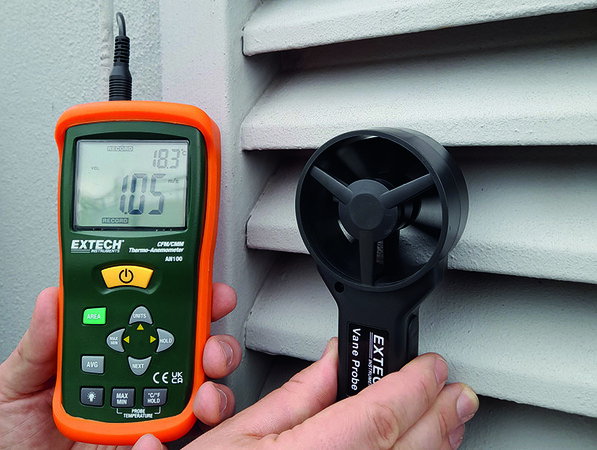“Closing the window” in the lift shaft
A recent study has confirmed the effectiveness of an intelligently controlled smoke extraction flap in a lift shaft. This involved checking whether the installation of smoke extraction flaps in lift shafts had a positive influence on the energy situation in multifamily buildings.
To investigate the effect of the so-called chimney effect, measurement instruments were installed in a ventilation channel connecting a lift shaft to the envelope and intended for smoke extraction in the event of fire. A comparison of buildings that did or did not have this smoke extraction flap installed revealed that significant savings were possible thanks to this technology, according to a brief version of the study.
The investigation was conducted on Ben-Gurion-Ring in Frankfurt am Main in buildings of GWH. It was commissioned by the GWH Wohnungsgesellschaft mbH Hessen and the Simplifa consultancy.
Results can vary greatly
 Photo: © Lars Walter-Sinsel
Photo: © Lars Walter-SinselSavings: Savings of about 680 kWh can be achieved over two weeks in a multifamily building if lift shafts with ten landings each have one access. The average outside temperature at this time was about 4°C. "These results are in line with the expectations and have been confirmed by other investigations," the short version continued.
Results vary: But it also emerged that the results can vary greatly. A similar building was examined in this project. It had been recently renovated and the savings effect was smaller although the size, use and lift shaft were identical.
Greatest effect: Another result was that the savings effect was greatest in the case of low exterior temperatures and high interior temperatures.
Savings dependent on the heating system used
Heating system: In addition, an extrapolation was made for the heating period 2022/23. It turned out that savings of 7,943 kWh in useful energy per year and 1.3 t CO2 emissions annually were possible. Great energy savings could above all be made in similar building classes. However, the savings in the form of final energy and primary energy were dependent on the heating system used.
Astounding: The fact that the effect is also as great in tenement buildings with unheated stairwells is astounding. For the most part, the heat comes from the flats adjoining the staircase; air is also sucked through the cracks of flat front doors in the staircase," according to Professor Viktor Grinewitschus of EBZ Business School. He is the author of the study.
"This study permits the conclusion that the chimney effect is clearly measurable in buildings and provokes marked CO2 emissions. Therefore, the installation of smoke extraction flaps in the buildings considered makes sense," according to the conclusion. "Checking lift shafts in existing buildings for savings potential would be advisable," the short version recommends.
Background: Tenants and landlord are aware that there is a lift in the building. But very few operators are aware that there is a legally prescribed opening for smoke extraction and ventilation at the top of the lift shaft.
It is comparable to a permanently opened window in the attic of a residential building through which precious heating and air conditioning energy escapes outside unhindered. The lift connects all floors in the building with each other. For design reasons, the landing doors are not airtight as a result of which air also penetrates through closed doors into the shaft and escapes upwards due to the chimney effect.
"The retrospective installation of a smoke extraction flap in the shaft head means the energy loss through the lift shaft can be stopped," according to the press release. "The installation of corresponding sensors meets the lift and construction law requirements."
More information: You can download the complete study from the GWH website.
























Write a comment